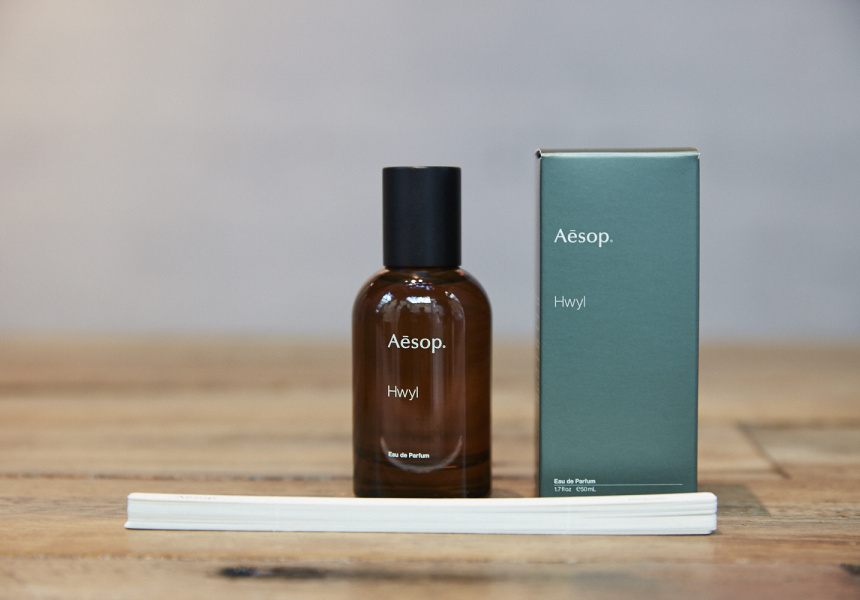For Barnabé Fillion, the nose behind Aesop’s latest olfactory release, a perfume begins with an image: from an image he extracts a sensory cluster of texture, ingredient, sound and place. When asked if there is one that defines Aesop’s Hwyl (pronounced “wh-ill”), Fillion describes scratching the damp bark of a tree in a Japanese forest to unearth the resin’s ambrosia.
Hwyl was born from a trip Fillion had taken to an ancient Hinoki forest in Kyoto full of 300-year-old Hiba trees. Within its depths lay an abandoned monastery covered in a soft bed of evergreen moss.
He describes the composition as “a dark green verdancy from the forest, evoking stillness and silence.”
Never miss a moment. Make sure you're subscribed to our newsletter today.
SUBSCRIBE NOW“I’d been to Japan several times before we started this project,” he continues. “There was a moment where the earthy, smokey ingredients we were looking at were really evoking the time I’d spent at the moss temple. The idea was already there, but we really captured the concept once we got further into working on the perfume.”
Having previously developed Aesop’s Marrakech Intense Eau de Toilette in 2012 (an update of the brand’s debut fragrance Marrakech), as well as scents for Le Labo and Paul Smith, Fillion is best known for unisex compositions that tread the line between savoury and botanical. Hwyl is no exception. The eau de parfum opens with sharp, citric top notes of thyme and aromatic spices before warming down to cypress, vetiver (a native Indian grass) and frankincense. It’s clean, yet heady – the kind of scent that will keep you returning to your wrist to try and pin it down. Not a dissimilar process for Fillion and Aesop’s general manager, Dr Kate Forbes, who during its two-year development sifted through 150 samples before finally arriving at the end result.
Getting there was a lesson in language. The language of a perfumer, like that of a sommelier, is partially subjective and abstract. Unlike music, writing and colour, it’s a vocabulary that we are not taught at school, making the process of distilling an abstract idea the biggest hurdle for Forbes.
“Obviously, I’m not a perfumer”, says Forbes. “So, a lot of the journey for us was actually trying to define a common language to ensure that we were communicating in the same way. It sounds obvious, but when you’re trying to describe a smell, it is in reality, quite hard.”
In the end, Forbes and Fillion wanted to produce a neutral scent that expresses the personality of its wearer.
“The marketing of gender into perfume is a huge limitation,” says Fillion. “The power of unisex fragrance is that there are no limits. And really, I don’t like to call it ‘unisex’ – we’re just trying to do something a little more subversive, so that both men and women can make it their own.”

